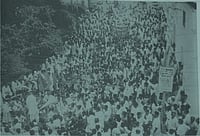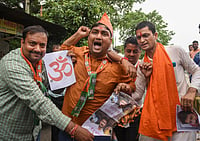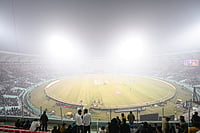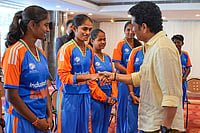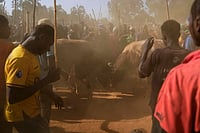
EBC, women and first-time voters are seen as key influencers, as over 2,600 candidates compete and alliances look to build early momentum toward the second phase.
NDA deployed top leaders including Modi and Nitish, stressing development, jobs and law-and-order, while the INDIA bloc led by Tejashwi and Rahul focused on employment, price rise and caste census
Intense campaigning across the Kosi–Mithila to Patna belt highlights key battleground seats
Bihar votes in the first phase of polling on Thursday, kicking off a two-stage election to choose all 243 MLAs. Phase One covers 121 constituencies across 18 districts; the second phase will be held on 11 November, with counting set for 14 November.
The Phase-One constituencies stretch from the Kosi–Mithila belt through central Bihar and into the Patna urban cluster, making this round crucial for both alliances looking to shape momentum early.
NDA’s Campaign: Heavyweight Push, Central Messaging
The ruling NDA placed its strongest campaigners front and centre. Prime Minister Narendra Modi launched the alliance’s Bihar drive on October 24 with large rallies in Samastipur and Begusarai, followed by events in Muzaffarpur and Chhapra on October 30, a Patna roadshow on November 2, and a major rally in Arrah in the final stretch.
He also addressed a gathering in Saharsa. Taken together, the prime minister logged at least six major rallies touching Phase-One constituencies, in addition to the Patna show of strength.
Modi’s speeches carried a consistent message: “Viksit Bihar = Viksit Bharat”, anchored around a one-crore job promise, an appeal to private investment-led industrialisation, and a pointed warning against a “return to jungle raj.”
The contrast between the NDA’s development narrative and the RJD’s past tenure remained the central rhetorical pivot throughout his itinerary.
Chief Minister Nitish Kumar, meanwhile, led his own district-level push. His speeches focused on law-and-order gains, women’s education and mobility, and pre-2005 memory as a contrast frame. His Madhepura line — “from anarchy to rule of law” — formed the JD(U)’s core pitch. Alongside multiple ground rallies, Nitish also issued a statewide video appeal, underlining his personal stake in turnout and retention.
Union Home Minister Amit Shah focused on Mithila and adjoining districts, holding rallies in Darbhanga, Begusarai, and Samastipur and returning later with flood mitigation and regional development commitments. Defence Minister Rajnath Singh and BJP president J.P. Nadda covered Tarapur, Saharsa, Fatuha, and other Phase-One hubs, signaling that the alliance regarded early consolidation as critical. The central BJP leadership effectively saturated the Mithila-to-Patna corridor in the campaign’s last week.
Opposition’s Counter: Jobs, Price Rise, Caste Census
The Mahagathbandhan (INDIA bloc) centred its campaign around Tejashwi Yadav, projecting him as the coalition’s chief ministerial face. The alliance’s “Tejashwi Pran” platform placed employment, price relief, and welfare guarantees at its core.
Rahul Gandhi rejoined the trail with rallies in Muzaffarpur and Darbhanga, sharpening the opposition’s messaging on caste census, representation, unemployment, and inflation. His phrasing occasionally stirred reaction, but the thrust remained aimed at OBC, EBC, and Dalit voters, who form critical blocs in Phase-One districts.
Tejashwi Yadav’s stump speech held steady on a jobs-first promise: one government job per family, time-bound recruitment, support for women, and improved MSP guarantees for farmers. The message attempted to frame migration and paper leak scandals as systemic failures requiring structural correction. He covered Phase-One constituencies at a rapid clip in the final week.
Seat-sharing agreements place JD(U) on 57 of the Phase-One seats and the BJP on 48, with smaller NDA partners contesting the remainder.
The Mahagathbandhan fields its candidates across the full spread, with Jan Suraaj introducing triangular strains on select seats. Across both phases, 2,616 candidates are in the race.
The BJP hopes the Patna roadshow momentum translates into urban booth mobilisation. Danapur and Fatuha will show whether that energy extends to fringe seats. Seats such as Alinagar, Benipur, Keoti, Jale, and Darbhanga (rural and urban) have seen dense campaigning from both sides. EBC and women voters may shape outcomes here and influence second-phase districts.
The NDA’s scale-up jobs pledge and the INDIA bloc’s public-sector job guarantee will be tested at the booth by first-time voters. Believability — not volume — may decide the late-breaking vote.
As voting begins, both alliances know the first phase is less about immediate arithmetic and more about shaping the story that voters carry into the second. The NDA wants to project steadiness and development backed by recognisable leadership; the Mahagathbandhan hopes to turn public anger over jobs, prices and migration into electoral traction. Whether turnout follows enthusiasm, organisation or habit will decide which narrative takes hold. By tonight, Bihar will not know its next government — but it will know which way the wind is blowing.























